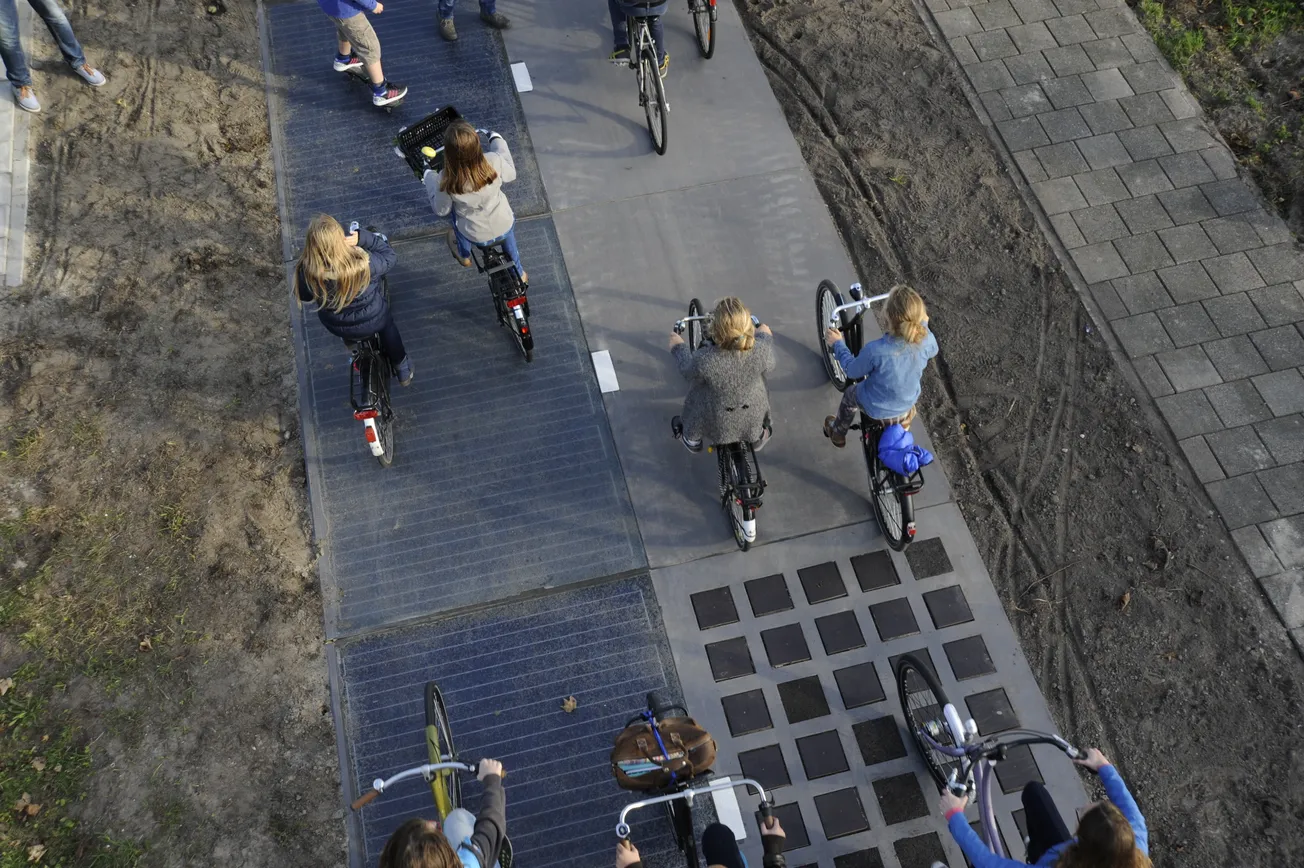Solar roads in France and the US trialled and failed miserably, but the Dutch in the land of the bicycle exceeded their projected solar power generation from an experimental 70-meter-long solar bicycle lane.
“They had originally hoped to produce somewhere between 50 and 70 kW?h per square meter per year, the first year actually yielded 73 kW?h per square meter per year, and the second, 93 kW?h per square meter per year, according to Press Reader.”
The French experimented with a solar vehicle road which was a complete disaster.
“Covering 2,800 square meters, Normandy’s solar road was the first in the world, inaugurated in 2016 in Tourouvre-au-Perche, France.
Despite the hype surrounding solar roads, two years after this one was introduced as a trial, the project has turned out to be a colossal failure — it’s neither efficient nor profitable, according to a report by Le Monde.
According to Le Monde’s report, various components of the road don’t fit properly — panels have come loose and some of the solar panels have broken into fragments.
On top of the damage and poor wear of the road, the Normandy solar track also failed to fulfill its energy production goals — the original aim was to produce 790 kW?h each day, a quantity that could illuminate a population of between 3,000 and 5,000 inhabitants — however, the rate actually produced stands at only around 50% of the original predicted estimates.
The unfortunate truth is that this road is in such a poor state, it isn’t even worth repairing — last May, a 100-meter stretch had deteriorated to such a state, that it had to be demolished.
Even rotting leaves and thunderstorms appear to pose a risk in terms of damage to the surface of the road. What’s more, the road is very noisy, which is why the traffic limit had to be lowered to 70 km/h.”
Business Insider
The US experiment also failed.
“Despite costing up to roughly $6.1 million, the solar road became operational in 2016 — 75% of the panels were broken before being installed, it doesn’t generate any energy, it can’t be driven on, and 83% of its panels are broken, according to Daily Caller. One electrical engineer even went as far as describing it as a “total and epic failure” in an interview with KXLY news.”
The Dutch cracked the durable solar panel issue and are now experimenting with solar panelled vehicular roads, and they sold their technology to the US.
The solar panels used on the Dutch bike path are sandwiched between glass, silicon rubber and concrete, and are strong enough to support 12-tonne fire trucks without any damage. Each individual panel connects to smart metres, which optimise their output and feed their electricity straight into street lighting, or the grid.
The engineers spent five years creating the system to be durable. “If one panel is broken or in shadow or dirt, it will only switch off that PV panel,” said Jan-Hendrik Kremer, Renewable Energy Systems consultant at technology company Imtech.
More than 150,000 cyclists rode over the solar panels during the trial, and so far they’ve only noticed one fault – a small section of a coating, which provided grip to the surface, has become delaminated due to temperature fluctuations. The team at SolaRoad is now working to improve this coating.
“We made a set of coatings, which are robust enough to deal with the traffic loads but also give traction to the vehicles passing by,” Stan Klerks, a scientist at Dutch research group TNO – the parent company, which came up with SolaRoad – told Bazley from Al Jazeera.
The researchers design the panels to not only let in as much light as possible, but also to last at least 20 years – a similar lifespan to rooftop solar panels.
The potential is pretty huge. Not only could the roads generate enough electricity to power local households, but they can also provide some amazing lighting opportunities.
Last year a solar road was installed in the Netherlands by design lab Studio Roosegaarde, which sucked up the Sun’s energy during the day and then guided cyclists at night using beautiful Vincent Van Gogh ‘Starry Starry Night- inspired LED lights.”
Science Alert
Now you’re talking – I’d get on a bike for that!
“SolaRoad is now working with local councils around the Netherlands to try to roll the technology out in other provinces. A similar agreement has also been signed with California in the US.”
SolaRoad will be demonstrated on roads exposed to heavy traffic at two locations, namely in North and South Holland respectively.
The aim of the pilot is to study the performance of the pavement under heavy traffic loading, and to learn about the impact of solar pavement on daily road management and maintenance.
Engineering News
If the Dutch can improve their technology and it proves cost-effective, solar-powered roads, walkways and bicycle lanes are more aesthetically pleasing than those horrific fields of ugly shiny panels.









